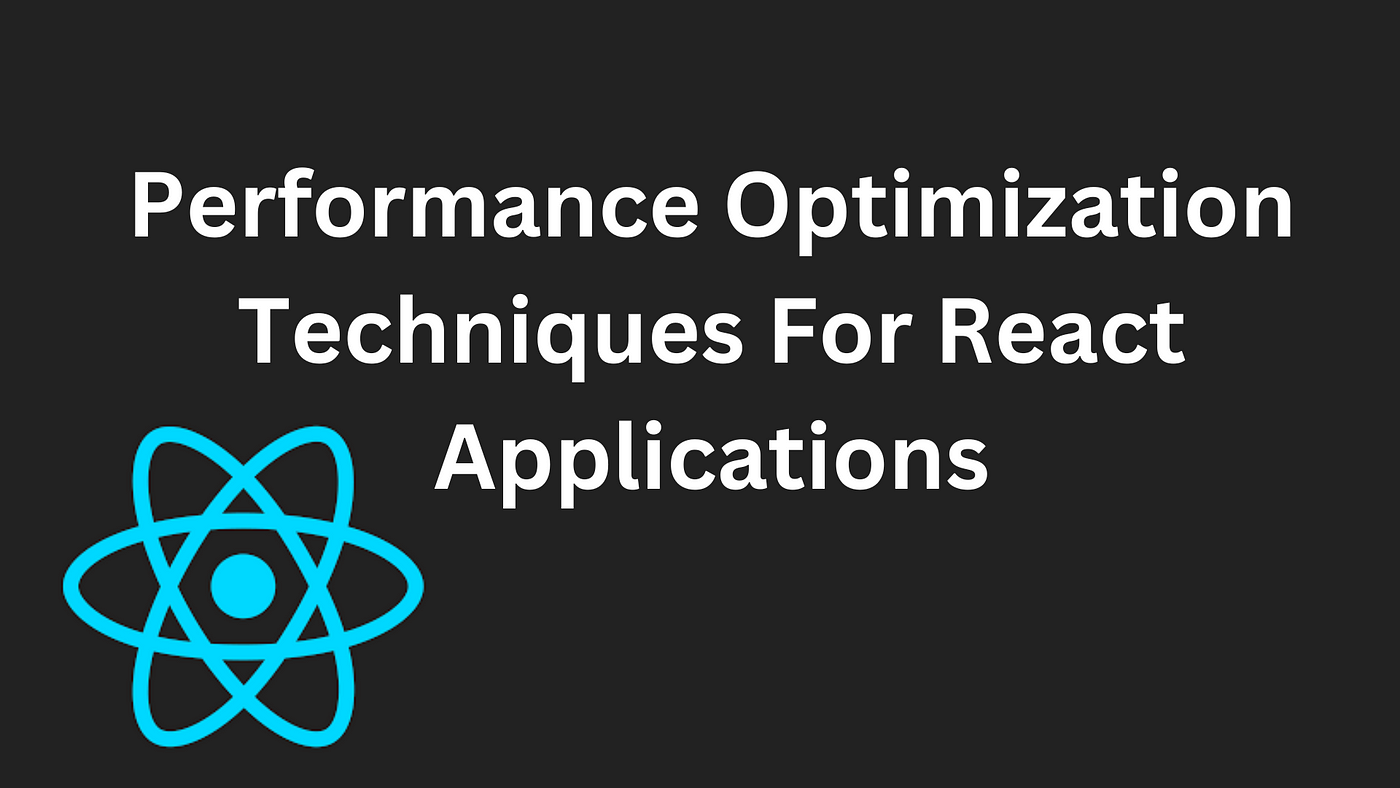Easy Tips and Techniques for React Performance Optimization, In the realm of web development, React has become the go-to library for building dynamic and interactive user interfaces. However, as applications grow in complexity, maintaining optimal performance can become a challenge. Inefficient code can lead to sluggish rendering, increased load times, and poor user experience. To address these issues, developers must employ various optimization techniques to ensure their React applications run smoothly.
This article aims to provide a comprehensive guide to optimizing React application performance. We’ll explore a range of strategies, from code-level optimizations to architectural best practices. Additionally, we’ll include six tables highlighting key performance metrics and corresponding optimization techniques. Finally, we’ll address some frequently asked questions to help developers navigate common challenges in React performance optimization.
Table of Contents:
- Understanding React Performance
- Code-Level Optimizations
- Rendering Optimization
- State Management Optimization
- Network and Data Fetching Optimization
- Component Optimization
- Architecture and Tooling
- Frequently Asked Questions (FAQ)
1. Understanding React Performance
Before diving into optimization techniques, it’s essential to understand the factors that influence React application performance. React operates by efficiently updating the DOM in response to changes in application state. However, inefficient state management, excessive re-renders, and inefficient component structures can all impact performance negatively.
2. Code-Level Optimizations
At the code level, there are several optimizations developers can employ to improve React application performance. These include minimizing unnecessary re-renders, optimizing event handlers, and using memoization to cache expensive computations.
| Optimization Technique | Description |
|---|---|
| Memoization | Memoization involves caching the results of expensive function calls and returning the cached result when the same inputs occur again. |
| useCallback and useMemo | These hooks help in optimizing functional components by memoizing callbacks and values respectively, preventing unnecessary re-renders. |
| PureComponent | PureComponent is a base class for React components that implements a shouldComponentUpdate method with a shallow prop and state comparison. |
3. Rendering Optimization
Efficient rendering is crucial for React application performance. By minimizing the number of DOM updates and utilizing virtual DOM efficiently, developers can significantly improve rendering performance.
| Optimization Technique | Description |
|---|---|
| Virtual DOM | React’s virtual DOM compares the current state of the DOM with the previous state and calculates the most efficient way to update the UI, minimizing unnecessary updates. |
| Keyed Fragments | Using unique keys for elements in lists helps React identify which items have changed, improving the efficiency of updates. |
| Batched Updates | React batches multiple state updates into a single re-render cycle, reducing the number of DOM operations and improving performance. |
4. State Management Optimization
Effective state management is critical for React application performance. By minimizing unnecessary state changes and optimizing stateful components, developers can ensure efficient rendering and data flow.
| Optimization Technique | Description |
|---|---|
| Immutable Data | Immutable data structures ensure that state changes are explicit and predictable, preventing unintended side effects and improving performance. |
| Context API | React’s Context API provides a way to share state between components without manually passing props, reducing unnecessary re-renders and improving performance. |
5. Network and Data Fetching Optimization
Optimizing data fetching and network requests is essential for React applications that rely on external APIs. By reducing latency and minimizing data transfer, developers can improve overall application performance.
| Optimization Technique | Description |
|---|---|
| Server-Side Rendering | Server-side rendering (SSR) pre-renders React components on the server and sends HTML to the client, reducing load times and improving performance. |
| Data Caching | Caching data locally or using CDN caching reduces the need for repeated network requests, improving response times and overall application performance. |
6. Component Optimization
Optimizing individual components can have a significant impact on React application performance. By identifying and optimizing performance bottlenecks, developers can ensure a smooth user experience.
| Optimization Technique | Description |
|---|---|
| Pure Components | Pure components do not rely on external state or side effects, making them easier to reason about and optimizing performance. |
| Memoization | Memoizing expensive computations within components prevents unnecessary recalculations and re-renders, improving overall performance. |
7. Architecture and Tooling
In addition to micro-level optimizations, developers should consider architectural best practices and utilize performance monitoring tools to identify and address performance issues proactively.
FAQs
Q: How can I identify performance bottlenecks in my React application?
A: Performance profiling tools such as Chrome DevTools and React Developer Tools can help identify areas of concern by analyzing rendering times, component lifecycles, and network activity.
Q: Is server-side rendering necessary for all React applications?
A: Server-side rendering is beneficial for improving initial load times and SEO performance, but it may not be necessary for all applications. Consider the specific requirements of your application before implementing SSR.
Q: What are some common pitfalls to avoid when optimizing React performance?
A: Common pitfalls include excessive re-renders, inefficient state management, and reliance on synchronous operations. Be mindful of component structure, data flow, and the impact of external dependencies on performance.
Conclusion
optimizing React application performance requires a holistic approach, encompassing code-level optimizations, rendering strategies, state management techniques, and architectural considerations. By following the tips and techniques outlined in this article, developers can create fast, responsive, and efficient React applications that provide an exceptional user experience.

